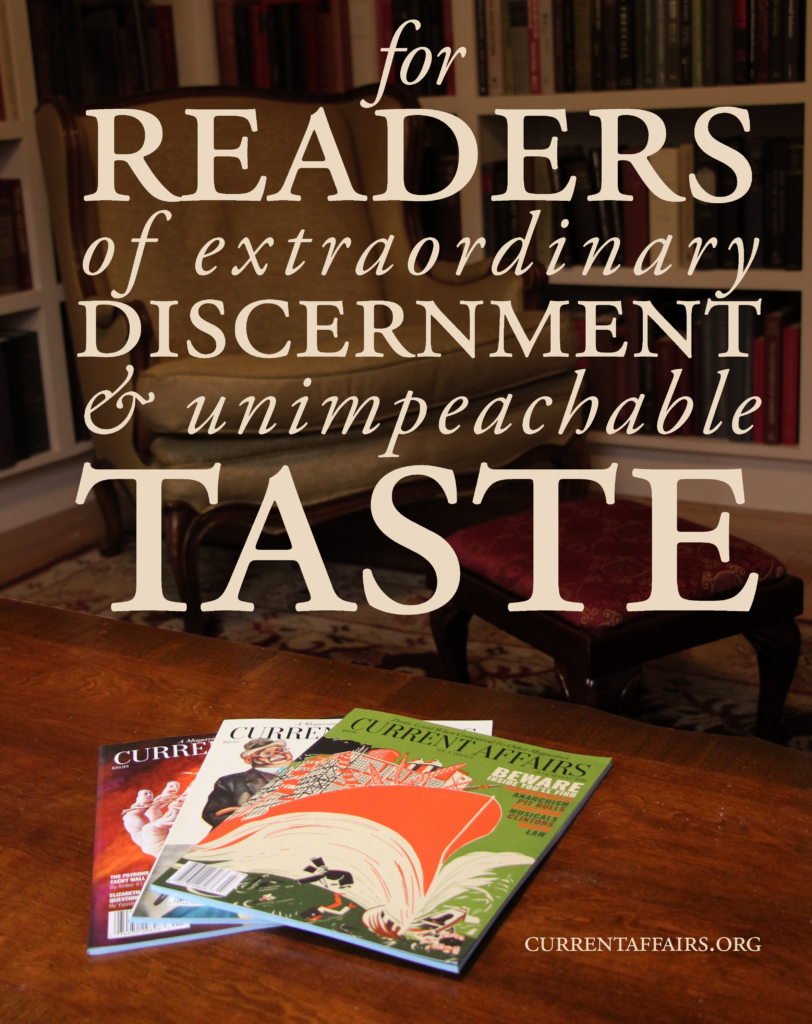
You Don’t Need To Care About The Stock Market
Most of us aren’t in the ownership class, so the fluctuations of the market don’t make much of a difference to our lives.
The market’s on a tear lately, despite a whole series of confounding economic crosswinds, from the Fed’s rate tightening to ongoing elevated inflation to a persistent slow-burn finance crisis in midsize regional U.S. banks. The S&P 500 index, for example, is up 20 percent since October and verging on bull market territory. This is treated in the media as tremendous good news—for example, just two weeks ago Michelle Singletary wrote in the Washington Post that more Americans owning stock is “great for their financial future.” Since most Americans have money in the market, rising share values must represent more wealth for the U.S. majority. Right?
Big surprise, it’s bullshit. Even the briefest exploration of the realities of stock ownership shows that it’s as highly concentrated in the richest U.S. households as every other kind of wealth. Treating the market indexes as indicators of the well-being of most people, or even those with some pension money in the market, is another instance of private commercial media treating the interests of the rich as the interests of everyone.

Owning the Room
Big fortunes aren’t held in cash. The towering wealth of the really rich certainly includes generous demand deposits, but the hallmark of a rich family is its well-diversified investment portfolio, including various asset classes like government bonds, real estate, and financial assets. Above all, these financial assets include corporate stock—pieces of ownership of companies. If you buy corporate stock, or “equities,” you own a bit of the firm and are entitled to a proportional piece of its profit. Companies generally issue these shares when they “go public,” inviting investors to buy into a growing business and own a piece of its profitability. They also sell shares when raising cash for growth or expansion.
Big corporations often have many millions of shares outstanding, reflecting decades of expansion and many rounds of cash-raising. This means that individual investors tend to have limited amounts of stock relative to the total, and thus only sometimes exercise any direct control over the publicly-traded companies they own. Important exceptions to this do exist, like tech platforms Facebook and Google, which have a two-tier stock system (inspired by the similar system at the Washington Post) that allows the company founders to yield disproportionate voting control and thus retain control of the company. But in general, large stockholders can generally get a hearing with senior executives or demand seats on corporate boards. Ownership of large amounts of stock in the gigantic corporations that dominate our market system, from Wall Street to Silicon Valley, means ownership of the economy. And this form of wealth, riskier than others but with potentially much higher yields, is even more concentrated than the rest of it.
The definitive work on U.S. stock ownership is by the economist Edward Wolff of New York University and the National Bureau of Economic Research. In a series of research papers, Wolff confronted the idea of the “ownership society,” popular among conservatives and many liberals, which is based on the fact that many U.S. households own some stock, mainly indirectly through pensions like 401(k)s. (These are common defined-contribution pension products, basically shares in mutual funds which themselves contain shares of companies, and these products have come to largely replace the defined-benefit pensions common during the Cold War, which had a guaranteed payout that today’s 401(k)-type plans lack.) The idea is that since many white-collar Americans do have some exposure to the market, Americans generally benefit from rising corporate profits and a booming stock market. But Wolff discovered that, in fact, the proportion of Americans owning any stock peaked at 51.9 percent back in 2001, fell in that recession, and then recovered between market crashes, before it dropped again to 46.9 percent after the 2008 financial crisis. So the first point is that, in fact, less than a bare majority of U.S. households actually own any stock at all.
But the far greater point is that in addition to this limited participation, “many of these families had only a minor stake in the stock market in 2010, with only 34% with total stock holdings worth $5,000 (in 1995 dollars) or more…and only 22% with holdings worth $25,000 or more.” Middle-class wealth is mostly tied up in physical assets, primarily the family home along with cars and other personal property—Wolff found that the middle swath of American households had three-fifths of their assets invested in their homes, although due to large mortgage debt, housing wealth is limited among the middle class. In contrast, the richest 20 percent of Americans own their home almost universally, and often own other real estate.

The bottom line is that stock ownership is “highly skewed by wealth class. The top one percent of households classified by wealth owned 40 percent of all stocks in 2016, the top 10 percent 84 percent, and the top quintile [20 percent] 93 percent.” Other business assets are even more concentrated. And notably, “There were striking differences in rates of return by wealth class.” The returns on gross assets were generally higher for the top 1 percent than for the middle three quintiles. “The differences reflected the greater share of high yield investment assets like stocks in the portfolios of the rich and the greater share of housing in the portfolio of the middle class.”
French economist Thomas Piketty’s famously meticulous analysis of modern wealth data found that
“[T]he importance of real estate decreases sharply as one moves higher in the wealth hierarchy. In the ‘9 percent’ group, … real estate accounts for half of total wealth. … In the top centile [1 percent], by contrast, financial and business assets clearly predominate over real estate. In particular, shares of stock or partnerships constitute nearly the totality of the largest fortunes. … Housing is the favorite investment of the middle class and moderately well-to-do, but true wealth always consists primarily of financial and business assets.”
As the socialist economics magazine Dollars & Sense more directly put it,
“Americans are treated to a daily stock market report on the nightly news. And for some (a small minority) this report will have considerable relevance. But for the vast majority of viewers, the numbers will seem unconnected to their daily struggle to make ends meet—because they are.”
Even the New York Times grudgingly recognized that “riotous market swings … have virtually no impact on the income or wealth of most families. The reason: They own little or no stock. … Roughly half of all households don’t have a cent invested in stocks, whether through a 401(k) account or shares in General Electric.”
This also means, of course, that they sit out the stock market rallies (stretches of rising stock prices), which recently brought the richest 10 percent to owning a new high of 88.8 percent of outstanding stock, according to the Fed’s most recent Distributional Financial Accounts data. That’s an especially big deal in this neoliberal era of gigantic global corporations (which are often monopolies or at least oligopolies), because profits are so tremendously high. Corporations return money to their stockholders either by increasing the amount of profits paid to them, called dividends, or by buying up their own stock, which tends to increase its price and thus increase shareholder wealth. The business press reports that after pausing these payouts during the uncertainty of the COVID pandemic, companies paid out $20.3 billion in dividends and spent over $500 billion on buybacks in just the first half of 2021 alone. This is where the real wealth of society is located.
The Real Ownership Society
Beyond just having piles of cash and fancy personal property, it is this that defines the real capitalist ruling class—ownership of the productive economy. The extremely high level of centralization of business equity means that despite fashionable claims that the ruling class is made up of sleek professionals in media or influencer roles, the real ruling class is an owning class that possesses not just liquid wealth but owns most of the world of big business. When stock markets boom, as they have for the last few decades (between the usual dizzying crashes), and companies report years of gigantic record-breaking profits, you may benefit a bit if you hold some shares, like in a decent retirement account (assuming you retire between the crashes!). But the world of big business and Corporate America is mainly the property of the richest households, and this nexus of corporate power and rich families should be a central part of everyone’s understanding of who’s really in charge of the world.

The pattern is difficult to escape. The same hyper-concentration of financial assets is present in more cutting-edge markets like cryptocurrencies, the new digital assets that claim to be potentially usable as decentralized money systems outside the control of governments and banks. Economists writing in the National Bureau of Economic Research recently found that mining capacity for new Bitcoin is highly concentrated, with the top 10 percent of miners controlling 90 percent of the capacity and 0.1 percent alone owning 50 percent. And the conservative Wall Street Journal reported that about 0.01 percent of the holders of Bitcoin, the most popular cryptocurrency, own 27 percent of the existing 19 million Bitcoin, and laughed that for all its hype of decentralization, “The top bitcoin holders control a greater share of the cryptocurrency than the most affluent American households control in dollars.” The pattern of lopsided ownership of equities tends to reliably duplicate itself with new, trendy financial assets.
For the ruling class, a share is a thing you own, not a thing you do.




